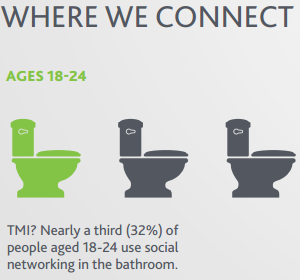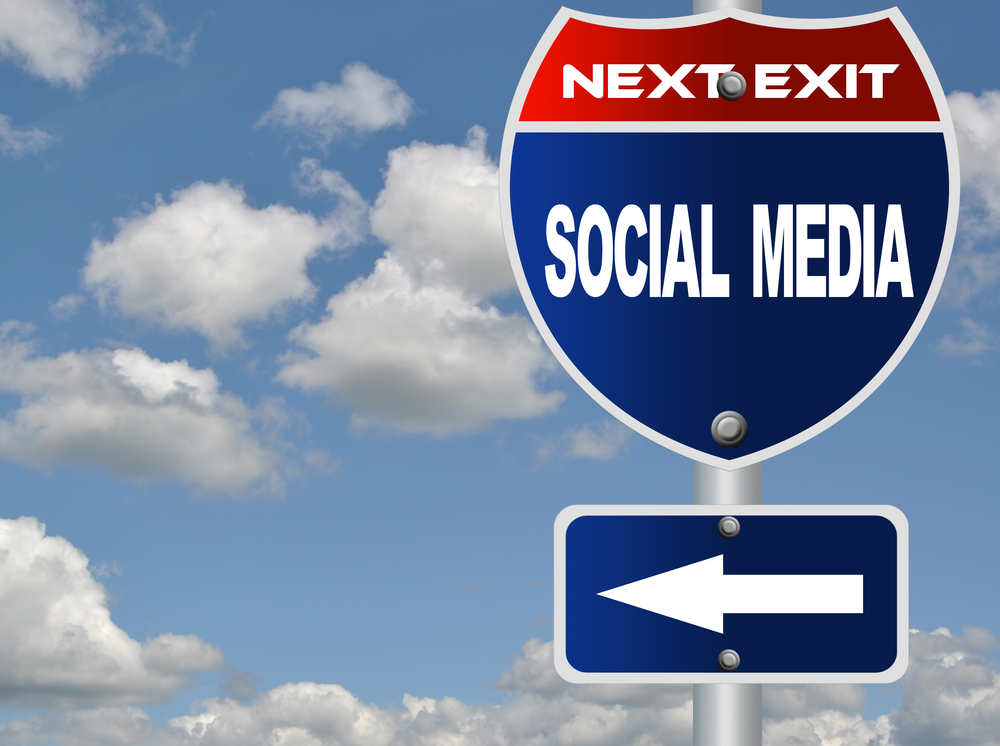Marketers can certainly reach a wide consumer audience through social media channels. Networks like Facebook and Twitter have become integral parts of everyday life for many Americans, which has encouraged a percentage of social users to access and manage their accounts in a variety of locations. According to new data from NM Incite, time spent on social platforms is up 37 percent year-over-year. More, 32 percent of the heaviest social users – 18 to 24 year olds – visit their accounts from the most private of places – the bathroom.
 The new NM Incite data shows that businesses that embrace social media marketing can engage with prospects even while they’re on the toilet. In fact, there are limited distractions in the bathroom, so social media content might have a higher penetration rate and earn consumers’ attention more frequently because, let’s be honest, these people have some time to kill.
The new NM Incite data shows that businesses that embrace social media marketing can engage with prospects even while they’re on the toilet. In fact, there are limited distractions in the bathroom, so social media content might have a higher penetration rate and earn consumers’ attention more frequently because, let’s be honest, these people have some time to kill.
However, a new report from Pitney Bowes Software finds that marketers are overcommitting to social channels that don’t always have a highly active consumer population. In a recent poll, Pitney surveyed marketing decision-makers in the U.S., U.K., France, Germany and Australia and discovered that their social media actions don’t always reflect consumers’ preferences.
For example, 93 percent of internet users indicated they use Facebook, but only 84 percent of marketing decision makers use the platform for outreach initiatives. Additionally, 57 percent of marketers report using Twitter as a promotional avenue, yet only 31 percent of consumers actively follow and engage with such brands via the site. Social media can be an effective way to reach and engage with prospective and current customers, but sites like Facebook and Twitter must be managed cautiously or else branded content can push people away.
Beyond leveraging the right platforms to appeal to potential customers, marketers must also make sure their outreach efforts have positive impacts on their branding programs. According to Pitney, consumers that noticed ads from brands they follow indicated they had an annoyance rate of 11 percent. Annoyance rate increased to 25 percent when unfollowed branded ads appeared in users’ news feeds.
Social media provides businesses easy access to consumers, but it’s a tricky sport. Consumers admit to using these sites even while in the restroom, which opens the door for more personal engagement and higher content delivery rates. Brands that have earned follows from their fans must provide their networks with information that offers assistance long term, which isn’t often a Sponsored Ad or Story, but well-written blog content. Businesses that have active social presences can reach internet users throughout the day, from morning commutes to bathroom breaks, the web helps marketers get the word out on their products and services.




